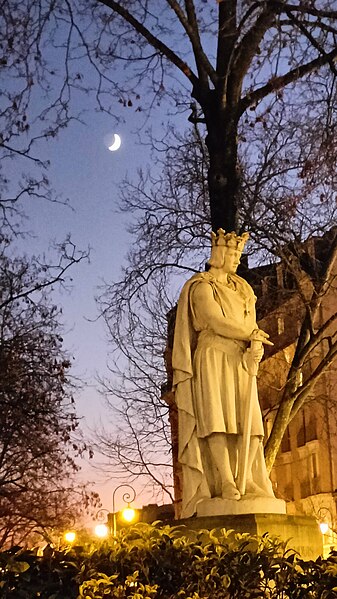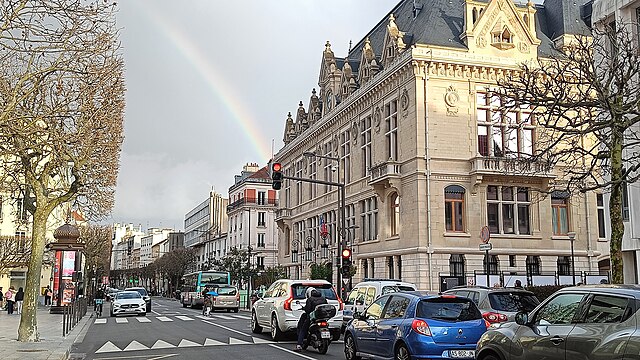The Château de Vincennes is a former fortress and royal residence next to the town of Vincennes, on the eastern edge of Paris, alongside the Bois de Vincennes. It was largely built between 1361 and 1369, and was a preferred residence, after the Palais de la Cité, of French kings in the 14th to 16th century. It is particularly known for its "donjon" or keep, a fortified central tower, the tallest in Europe, built in the 14th century, and for the chapel, Sainte-Chapelle de Vincennes, begun in 1379 but not completed until 1552, which is an exceptional example of Flamboyant Gothic architecture. Because of its fortifications, the château was often used as a royal sanctuary in times of trouble, and later as a prison and military headquarters. The chapel was listed as an historic monument in 1853, and the keep was listed in 1913. Most of the building is now open to the public.
Donjon of the Château de Vincennes
Statue of King Saint Louis at Château de Vincennes.
The château behind a boar hunt, by Limbourg Brothers or Barthélemy d'Eyck (1412–1416)
The château by Jean Fouquet (1455)
Vincennes is a commune in the Val-de-Marne department in the eastern suburbs of Paris, France. It is located 6.7 km (4.2 mi) from the centre of Paris. Vincennes is famous for its castle: the Château de Vincennes. It is next to but does not include the Bois de Vincennes, from which it took its name, which is attached to the city of Paris.
Vincennes city hall
Statue of king Saint Louis at Château de Vincennes.
City Hall, rue de Fontenay in Vincennes.
Panoramic view of the church and City Hall of Vincennes







